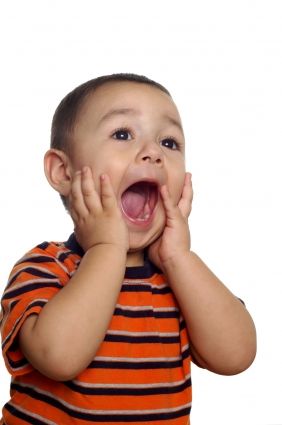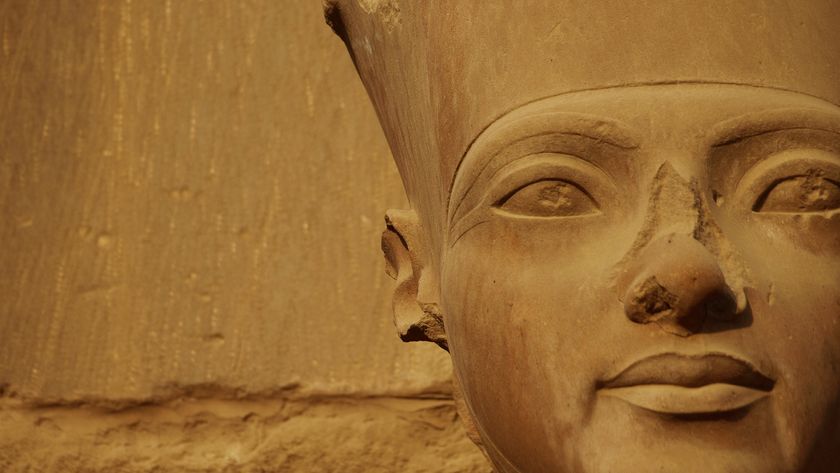Why Halloween Terrifies Some Kids

The pitter-patter of little feet running from door to door this Halloween, dressed to the nines in their creepiest costumes sounds, like good old-fashioned fun.
But for some kids, the ghosts, goblins and witches are more terrifying than many adults realize. While mild fear of some costumed character, say Santa Claus, is normal for kids, extreme fears that keep children from going trick-or-treating or to a party at Chuck E. Cheese's, where the man-size mouse could give them a fright, are called phobias.
About one out of every 100 kids suffers from phobia of costumed characters. And while the phobia may seem insignificant, it can become problematic when these kids can't go to certain events or venues where they might encounter a masked person, according to Thomas Ollendick, professor of psychology and director of the Child Study Center at Virginia Tech.
Ollendick treats plenty of fearful kids, ranging in age from 6 to 14 years old, who fly in from all parts of the country to his clinic, he said. His intensive one-session therapy gets rid of specific phobias for about two-thirds of the kids he treats.
Other childhood fears
Like adults, about 5 percent to 10 percent of kids experience some form of specific phobia, according to Ollendick. Animal phobias are top on kids' lists, with dogs being the most feared animal, followed by insects such as bees, Ollendick has found. Then come fear of the dark, stormy weather and costumed characters.
When a character is masked, a child doesn't know what is beneath the costume, and the masked person may be appropriately exuberant and will often approach kids unexpectedly, Ollendick explained.
Sign up for the Live Science daily newsletter now
Get the world’s most fascinating discoveries delivered straight to your inbox.
"We have kids who come in for treatment who can watch me or my clinicians put on a mask and they think I'm not the same person because I have this costume on now," Ollendick told LiveScience. "They are unable to fully sort that out, that somehow you become transformed when you are costumed. For kids that's frightening."
Not knowing what to expect from the characters, kids make up their own stories. "The children are uncertain or they believe that something harmful can happen to them when they can't see the face of an object, a person approaching them," Ollendick said. "So it's oftentimes a fear that some harm or danger is going to come to them because they don't know what's behind the mask."
Fear or phobia?
Not every character fright is cause for concern. Many kids have a mild fear of sitting on Santa's lap or talking to some unfamiliar masked person.
In fact, fears likely helped our ancestors survive.
"Part of the reason that people have more fears of certain things than others is because somewhere along the line there has been an evolutionary advantage to learning those fears more readily than other things," said Michael Kozak of the National Institute of Mental Health in Maryland.
But when mild fear becomes intense phobia, the result is problematic and often unhealthy, Ollendick says.
If you're wondering whether your child has a costumed character phobia, Ollendick recommends three criteria. If the fear is intense, frequent and durable (lasting six months or longer), that fear has crossed over into phobia territory.
Another cue: Factual information rarely eases a phobia. "That's how you are categorized as having a phobia, if your fear persists despite routinely delivered information about safety," Kozak said.
Fear busters
Rather than educating kids on the low risk involved in contact with costumed characters, Ollendick completes so-called one-session exposure therapies with kids that can last up to three hours. And yes, ghosts and goblins and werewolves are welcome.
A child who is, say, afraid of clowns, might first look at pictures of clowns, followed by face-painting, in which the therapist and young patient color each other's faces with clown make-up. The session works up to the penultimate of the child playing games like Chutes and Ladders and doing other kid stuff alongside three dressed-up clowns.
This process essentially "demystifies what they're afraid of," Ollendick explained.
- What Really Scares People: Top 10 Phobias
- Halloween's Top 10 Scary Creatures
- Halloween News & Information
Jeanna Bryner is managing editor of Scientific American. Previously she was editor in chief of Live Science and, prior to that, an editor at Scholastic's Science World magazine. Bryner has an English degree from Salisbury University, a master's degree in biogeochemistry and environmental sciences from the University of Maryland and a graduate science journalism degree from New York University. She has worked as a biologist in Florida, where she monitored wetlands and did field surveys for endangered species, including the gorgeous Florida Scrub Jay. She also received an ocean sciences journalism fellowship from the Woods Hole Oceanographic Institution. She is a firm believer that science is for everyone and that just about everything can be viewed through the lens of science.











